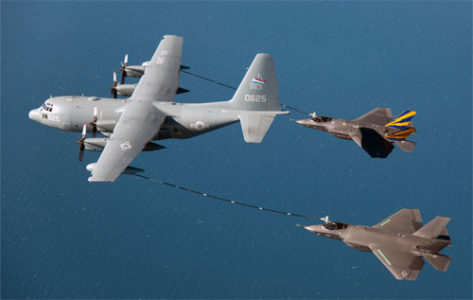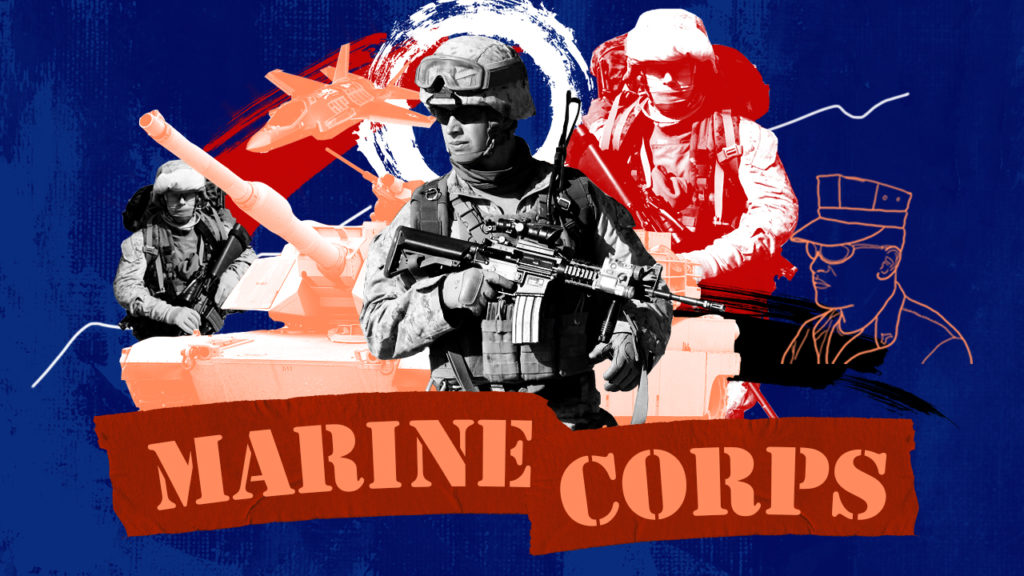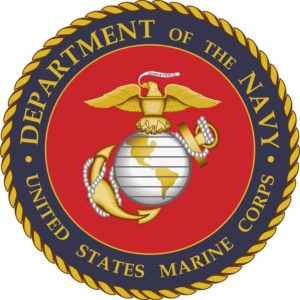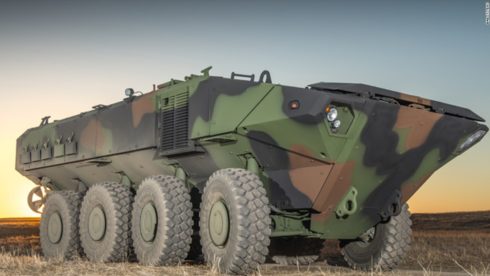Written by Captain 3rd rank S. Ivanov; Originally appeared at Foreign Military Review #9 2019, translated by AlexD exclusively for SouthFront
The leadership of the US Department of Defence gives priority to the development of the Marine Corps (MC) of the national Navy, considering it as one of the most universal and effective tools for ensuring American interests anywhere in the world.
The Marine Corps, as a component of the Navy, has a special status in the US Armed Forces and can be considered an independent type of armed forces for a number of reasons.
The commandant directs the MC forces. General Robert Blake Neller* currently holds this position. [Translator’s note: David H. Berger holds this position. General Neller retired on July 11, 2019.]
The development directions of the MC and improvement of its organisational structure, as well as the general principles and procedures for the combat use of formations of this type of troops are determined by conceptual documents, primarily by “Expeditionary Forces of the XXI Century” and “The Concept of Combat Operations of the Marine Corps”. They were published in 2014 and 2016 respectively.
The main requirements for the MC is to continue its constant readiness to respond quickly to sudden threats and maintain the necessary level of forward presence, as well as the ability to operate as part of the united and multinational formations of various levels. In addition, attention is focused on the readiness to conduct expeditionary operations. Special emphasis in the documents is placed on the need to equip the MC units with highly professional specialists who can effectively use modern weapons and military equipment (WME).
The top priority areas of the US Marine Corps development include:
- increasing the number of personnel from 186 to 200 thousand people;
- improving the organisational and staff structure (OSS) of administrative and operational management bodies;
- improving the efficiency of organising and conducting operational and combat training (OCT) events, introducing new training methods for personnel;
- equipping MC units with modern WME models;
- improving the social security of military personnel, their family members and the prestige of military service.
About $10 billion are planned to be allocated annually to bring the number MC to 200 thousand military personnel by 2022.
Changes in the OSS are associated with an increase in the number of command units of marine expeditionary divisions (MED).
The structure of this management body is planned to include an information support battalion (up to 500 people) and a company of automated control and communication systems (up to 200).
The reorganisation is carried out in the framework of the new manual “Conducting Information Operations by Formations of Heterogeneous Marine Corps Forces”.
According to military experts, this will improve the efficiency of the MED headquarters in the context of a significant increase in the volume of data received and processed during combat operations.
It currently has about 2,500 personnel and includes intelligence, communications, law enforcement battalions, a radio battalion and a company of aircraft operators. After the reorganisation, which is planned to be completed by 2020, the number of this structure will increase to 3,200 troops.
The operational and combat training (OCT) reform will aim to prepare the command and control forces to engage in combat operations with a strong enemy in an environment of active electronic and firing suppression of communication, navigation and intelligence systems. Computer simulation systems should be widely used in the training process.
In accordance with the development programmes, modernisation and purchase of modern air defence systems, the MC command is taking measures to increase the firepower of ground units, primarily through the modernisation of the M777 155-mm towed howitzer, the M327 120-mm towed mortar, and the M142 227-mm HIMARS multiple launch rocket system.
The MC aviation development programme for the medium term (until 2025) provides for a qualitative upgrade of the aviation fleet and radio equipment, including:
- replacement of AV-8B “Harrier” and F/A-18 “Hornet” aircraft of early modifications with fifth-generation F-35B “Lightning-2” fighters (in total, 420 aircraft are planned to be purchased – 340 F-35 with vertical take-off and shortened landing and 80 F-35S);
- completion of deliveries of MV-22B “Osprey” tactical transport aircraft and upgraded UH-1Y “Venom” combat support helicopters;
- modernisation of all KC-130J tactical transport and refuelling aircraft;
- replacing out-dated specialised AH-1W “Super Cobra” attack helicopters with their improved version of the AH-1Z “King Cobra”;
- adoption of the CH-35K “King Stallion” transport helicopters;
- manning UAV squadrons with new RQ-21A “Black Jack” tactical reconnaissance systems;
- inflow of AN/TPS-80 (G/ATOR) mobile airborne target detection radar stations into the operational radio engineering units.

Click to see the full-size image
Traditionally one of the main priorities of the command of the United States Marine is to improve the work with personnel. In this area, a number of innovations are expected: allowing women to hold positions in all military specialties, including “combat”; the introduction of full-time assistants to company commanders (squadrons) for physical training; the dismissal of military personnel with “destructive” behaviour, who used drugs and abused alcohol, as well as those caught in sexual crimes. In addition, it provides for an annual increase in the basic salaries of military and civilian personnel by 1.3%, preferential taxation and additional payments upon re-contracting.
Work continues to enhance the capabilities of the advance storage system. Currently, there are two storage ship squadrons (the 2nd in the Diego Garcia naval base (Chagos Archipelago) and the 3rd in the Guam naval base (Mariana Islands)) and a warehouse complex in Norway.
The storage vessels of each of the squadrons, as well as in Norway, store the supplies of the air force and materiel necessary for the conduct of combat operations by the MC expeditionary brigade for 30 days.
The introduction of the “Montford Point” type of floating base (FB) storage vessels in the squadrons at the end of 2015 significantly expanded the capabilities of mobile logistics support for marine corps formations.
As specialised platforms, the Montford Point-type FB can significantly reduce the time during operations for unloading weapons and equipment from storage vessels to the unequipped coast in the absence of a mooring front and port loading and unloading infrastructure. To do this, they are equipped with places for placing vehicles, a ramp for the transition of armoured vehicles, mooring devices for landing boats on an air cushion. In addition, aviation fuel storage facilities with a capacity of 1,500 tons are installed on board the FB.
Thus, the ongoing activities will affect not only the quantitative but also the qualitative component of the American Marine Corps. The number of personnel will increase by 14 thousand people, the MC will receive the latest attack and transport helicopters, the replacement of tactical fighters will be completed, and the UAV squadrons will be equipped with new types of aircraft.
The organisational structure will be optimised. All this will significantly increase the combat potential of the Marine Corps by 2025, expand the range of tasks it solves, and raise the level of interaction with the fleet forces.
*Appointed on September 24, 2015. He was the 3th commandant of the United States Marine Corps.







http://1.bp.blogspot.com/_lm2JI7sGwYI/S2z8nHmGt3I/AAAAAAAAIXQ/KD8vHv6xbLQ/s400/homophobe+soldier.jpg
Ol’ Gunny would be drummed out of the Marine Corpse if he re-enlisted in today’s new gay armed farces.
Lol
They probably have a component for off planet operations.
Eisenhower created the Marines Special Section.
Where the fact stops and the fiction begins with people like Randy Cramer who don’t provide evidence is tough to tell.
My approach is to gather and sometimes provide evidence from my own independent contact work.
There’s so much science fiction type secret space program material that I don’t have time to research most of it. I’m getting results running ET contact ops using methods that I’ve developed from research and trial and error. So that’s where I invest my time and energy.
The U.S. Marine Corps Special Section (USMC s.s.) was created by a secret executive order by President Eisenhower as an institutional safeguard in case the unacknowledged special access programs went rogue.[1] It was signed into law as a legal and covert branch of the US military in 1953 by President Dwight D. Eisenhower. USMC s.s. was mandated by President Eisenhower through the USMC s.s. special code to meet the exopolitical questions of Extraterrestrial Biological Entities (EBEs), and Extraterrestrial Vehicles (ETVs); to assist in assessing diplomatic opportunities and military threats and advise the MJ-12 committee and Special Study Groups (SSGs) with intelligence from a fully staffed and operational military intelligence machine, and respond to their requests for specially trained military assistance in all matters extraterrestrial.[2]
Article 21 of the USMC s.s. Special Code of Conduct is set in motion when either of two conditions is reached:
Less than 50% of the constitutional guarantees of the US government are in place.
Less than 75% of the operating functions of the US government are no longer being carried out.”[3]
It mandates that all USMC s.s. Officers in Service for Life take measures to restore executive and legislative authority of rouge agencies, no longer acting in the public trust, whose constitutional violations require legal restoration when “inevitable harm” is certain and/or prepare for conditions under Article 22.[4] It also mandates that one Officer in Service for Life speak out against rouge unacknowledged programs. In 2013, Captain Randy Cramer was authorized under Article 21 by his chain of command to speak out.
History
“President Eisenhower sought to gain information from … MJ-12 about alien related projects at a facility near Area 51 called S-4, both of which are located in a remote region of Nellis Air Force Base, Nevada. When denied the requested information, Eisenhower allegedly authorized a personal message that the agent and his immediate superior would deliver to those in charge at Area 51 and S-4. The message was a direct threat that the President would authorize a military invasion [by the First Army] of Area 51 and S-4 if his request for information was not carried out.”[5] They conceded, and Eisenhower was sent documents, albeit obvious whitewash.
Eisenhower, having realized that he can’t trust MJ-12, created a new military apparatus from scratch. USMC s.s. was to act as a counterbalance to MJ-12 long after Eisenhower left office. He wanted it to be a military unit since military personnel are disciplined and oath driven, unlike the intelligence community. He knew from personal experience that Navy and Marine Corps officers were of the highest moral and ethical fiber, so he recruited former first officers from the Navy and Marine Corps, most of which had recently retired from WWII and many of them being in their 50’s.
They got a bunch of JAG officers and tasked them with writing a code to govern this military-intelligence outfit. They wrote a stack of papers known as the USMC s.s. Special Code of Conduct. Thus, the USMC s.s. was born in late 1953. It was signed into law by President Eisenhower through a secret executive order.
In the beginning, they were mostly recruiting from the cadre of officers in the Navy and Marine Corps. That changed after they established their own private officer academy within the next five years. Then, they no longer took officers from the Navy or Marine Corps, except in special cases, in order to truly seperate the two branches, to minimize breaches of security and to keep USMC s.s. from being corrupted, which would involve giving a positive military modeling to both their enlisted personnel and their officer corps.[6][7][8][9]
In the wake of the Korean War, in which there were many fatalities, USMC s.s. devised a long-term plan to disclose its existence to the world once North Korea became a threat again.[10]
In the mid-1960’s, USMC s.s. conducted a study which concluded that augmented soldiers trained using a “with-the-grain” style of programming last longer, are more stable, and are more cost-effective. This study was presented to the MJ-12 comittee, who ignored it. In response, USMC s.s. began their own augmented soldier program, Project Moon Shadow.
Also in the mid-1960’s “when a lot of the smaller programs in the covert military space program were laying down their bets on what they thought their long term investments should be, so people were looking at the technology, asking do we really want to spend the next 30 years making sure we’ve got the best most powerful space ships that we rule the skies or do we want to spend the next 30 years developing the most advanced computer technology so we rule information , or do we want to spend the next 30-40 years on super soldier technologies that we rule and murder machine assasins or do we want to focus on psionic development?
And we decided that we were going to put our bets down on long term investment of psionic development, and so more than any other commander system we have used psionics at the very core of what we do and operate as the only fully functional psionic command within the covert military space program meaning that every single member of USMC s.s. is psionically trained, psionically conditioned, psionically genetically enhanced, given implants and then hooked up to a psionic computer which essentially routes everyone together into a simulated hive mind so we all actually get to participate as a military intelligence pseudo-collective way and that is one of the reasons we are very, very effective at what we do is because we absolutely operate as the only fully psionic command in the covert military space program.”[11]
The more unethical Alternative 3 became, the more amoral the unacknowledged program leaders became, and especially the more corrupt the special study groups became, the more USMC s.s. objected. Brigadier General Julian Smythe and others wrote a letter to the MJ-12 committee outlining USMC s.s. legal obligations, quoting Article 21 of its Special Code of Conduct. After he got “nothing but smiles” from them, he and the other commanding officers, in accord with Article 21, put together a list of officers to potentially come out, which narrowed down to Captain Randy Cramer USMC SS who was appointed Independent Field Commander.
well the marines – mostly enlisted sort of under-educated white trash from the no hope states = fly over states where the future is either the meth-way and a likely 10 to 15 in the penitentiary or the marines with a body-bag in the future and then lousy to non-existent veteran-pension plans. all in all a dismal outlook for today’s youth in the disunited states of A. shame on the elite and the founding fathers who concocted a constitution which is as much worth as the paper pompeo wipes his behind with!
https://i.redd.it/ke1zhfks5kqy.jpg